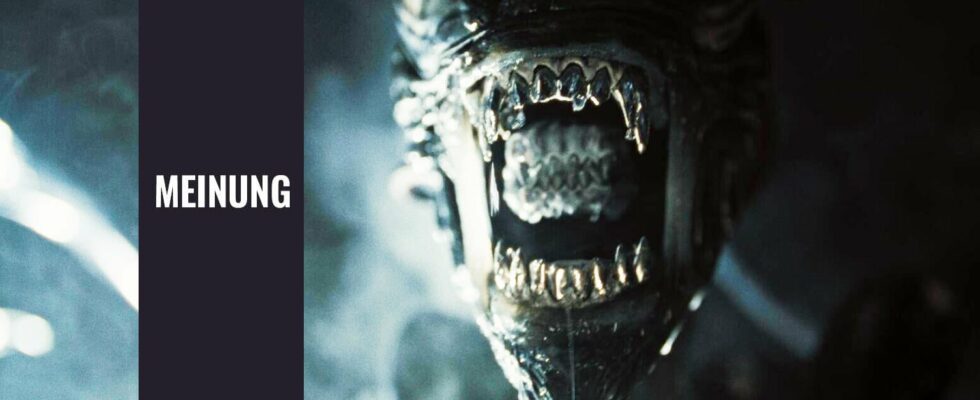In recent years, a trend has emerged in franchise cinema that concerns sequels. There are now so-called legacy sequels in which at least one Figure brought back from the earliest beginnings of the series becomes.
After star comebacks such as Jamie Lee Curtis as Laurie Strode in the new Halloween trilogy or Neve Campbell as Sydney Prescott in Scream, the legacy sequel trend has now reached the Alien franchise. However, the treatment of a well-known star has reached a questionable new low in the current part, Alien: Romulus.
Warning, from here on there follows a spoiler for Alien: Romulus!
Alien: Romulus brings back deceased Ian Holm as a CGI nightmare
In Ridley Scott’s Alien, Ian Holm first appeared as Android Ash He kept his artificial nature a secret from the rest of the crew because he was sent by the Weyland-Yutani Corporation as a spy on board the Nostromo to get the Xenomorph back into the corporation’s hands.
Alien: Romulus now sees a reunion with the British actor, who died in 2020. Using a mix of animatronics, CGI effects and AI for the voice, Holm can be seen as the new android Rook, who is modeled after his character from the first Alien film.
20th Century Studios
Ian Holm as Ash in the first Alien film
The effect is as irritating as it is hair-raising, because the CGI-generated face of a digitally rejuvenated Holm looks so smooth and artificially polished that it seems like a character from a video game. Even though Rook himself is an artificially created human, this artificial look doesn’t work for a second.
In his Alien: Romulus article, my Moviepilot colleague Jan Felix described the blockbuster as one of the most beautiful sci-fi films of all time. Fede Álvarez’s work definitely deserves this praise due to the detailed sets, authentic costumes and slimy details. The use of Holm’s bizarre CGI puppetwho in her worst moments looks like the scary doll Slappy from RL Stine’s Goosebumps universe, this is not the case.
Rook is a strange alien in the film, who seems more artificial than any Xenomorphs or Facehuggers that could be lurking around every corner in Alien: Romulus. More modern films like The Irishman or the last Indiana Jones film with a rejuvenated Harrison Ford in the prologue have shown that the Technology not yet mature and causes an oppressive uncanny valley effect when watching. This is the moment when the sight of an artificial figure triggers discomfort, confusion or other negative reactions.
Disney
Digitally rejuvenated Harrison Ford in Indiana Jones and the Wheel of Fortune
The latest Alien film, however, is made even more worrying by the combination of a digitally rejuvenated character and people brought back from the dead.
The franchise revival of dead stars is a worrying cinema development
In the Los Angeles Times interview linked above, Álvarez says that he from Holm’s widow Sophie de Stempel encouragement for the artificial appearance of the star. According to her, Holm had not been able to find a connection in Hollywood in the years following his role as Bilbo Baggins in The Hobbit. He also loved being part of Alien: Romulus.
However, these are only statements and decisions that were made over the head of the deceased himself. We will never know whether Holm would have actually played the part of Rook in the blockbuster, nor his opinion on the bizarre CGI creation in Frankenstein’s monster style that ultimately ended up in the film.
In the Star Wars universe, deceased stars such as Peter Cushing as Grand Moff Tarkin and Carrie Fisher as Princess Leia have been brought back for spin-off and prequel appearances in recent years. However, these have usually been brief moments that, as in the case of Fisher’s signature role, for respectful or appreciative cameos were used.
Disney
Carrie Fisher in Star Wars 9: The Rise of Skywalker
Ian Holm’s more extensive role as the manipulative alien villain Romulus, on the other hand, opens up unimagined possibilities in the cinema when it comes to the ethically reprehensible treatment of the dead. With the sole blessing of the bereaved, the screen could soon be transformed into a shameless dance of death, in which the actual death of a person is not an obstacle is more.
In the Marvel Cinematic Universe (MCU), time travel and multiverses have long existed, through which deceased characters, such as Hugh Jackman’s Wolverine in the Deadpool franchise, never have to remain permanently dead. Meanwhile, the medium behind it is itself heading towards a new kind of cynicism to.
Cinema has always had to adapt to technological advances when it comes to developments such as novel special effects. However, the line should be drawn at human death. Ian Holm’s CGI resurrection in Alien: Romulus is the definitive and most urgent proof of this yet.
